How I Turned An Idea Into An Outline
How I turned an idea into an outline
With NaNoWriMo around the corner, I thought I might show you how I plotted my novel.
This is the story structure I used:
0% inciting incident
0%-20% introduction in the world, ends with a point of no return
20% first plot point: the hero receives his marching orders
20%-50% response to the first plot point
35% first pinch point: reminder of the nature of the antagonistic force
50% midpoint: big fat plot twist that changes the hero’s AND reader’s experience
50%-80% attack: the stakes are higher now
65% second pinch point: again reminding the reader of the antagonistic forces at hand
80% second plot point: the final injection of new information into the story to give the hero everything she needs to become the primary catalyst in the story’s conclusion (no new information past this point)
80%-100% resolution + final conflict + return home

I didn’t make this up. I think it’s by Larry Brooks, if The Internet informs me correctly. Fun Fact: once you pay attention to it, you’ll see this structure everywhere. Just take a look at any Harry Potter book, for example.
These points are the “bones” of my story. Next, I decided what “flesh” to put on them.
I simply made a list of things I like to read about:
Books about books and libraries
Magic
Quirky characters
Intelligent, fast-paced and sometimes silly
So, I combined this list and the structure points into a story that makes sense. Because I don’t want to spoil my plot / I am still to shy about my wip, I will make up a new plot for this post, so I can show you.
0%: The hero does something magical without knowing how she did it. She discards it, because everybody knows it can’t have been real.
0%-20%: We see the daily life of the hero: she is unhappy because all she wants to do is read, but she is not allowed to. She reads in the dead of night and is punished for it by her evil stepcousin. She finds a book on magic.
20% It all clicks together: she can do magic!
20%-50% The daily life for the hero changes. Instead of reading all night, she practices magic. She now loves books even more. She has little victories over her evil stepcousin, but hasn’t won yet.
35% The evil stepcousin finds out that she can do magic and takes away the magic book.
50% She discovers she can do magic without the book.
50%-80% The hero is not the only one who is bullied by the evil stepcousin. Her younger cousin is a victim as well, and he doesn’t have magic to defend himself. The stakes are raised, this is bigger than herself now. The younger cousin also wants to read, so they have several bonding moments over reading.
65% The evil stepcousin hurts the younger cousin, he’s in a coma now.
80% The hero discovers the evil stepcousin could do all these evil things because he knows magic too.
80%-100% The hero confronts the evil stepcousin, fights him off, nearly loses but wins in the end. He gives up and releases his power over the younger cousin who wakes up from the coma.
It’s not the most genius plot ever, but I literally made this up in minutes. So can you! And imagine the genius plot you can come up with if you spend more than a few minutes on it.
Then I calculated how many scenes I need in which part of the story. My wip is a YA or 12+ book, so I want it to contain about 75,000 words in total. I want my scenes to be around 1,000 words long to keep it snappy, so I need 75 scenes.
Scene number 1 (0%) is the inciting incident, scene number 15 (20%) is the first plot point, scene number 26 (35%) is the first pinch point, scene number 37 (50%) is the midpoint, scene number 49 (65%) is the second pinch point, scene number 60 (80%) is the second plot point and scene 75 (100%) is the last scene.
Some sidenotes on the 1,000-word scenes:
That’s more of a vague rule of thumb than a strict rule. If your scene needs to be longer or shorter, make it longer or shorter of course. My wip has some 2,300-word scenes as well.
Having 1,000-word scenes does not mean I have 1,000-word chapters, that would be really short. I will divide my novel into chapters after I’m finished writing my first draft.
For NaNoWriMo, maybe you could write scenes of 1,667 words, so you do one scene per day. A 50,000-word novel has 30 scenes of 1,667 words. Inciting incident is at scene 1, first plot point at scene 6, first pinch point at scene 11, midpoint at scene 15, second pinch point at scene 20, second plot point at scene 24 and scene 30 is your last scene. That’s just an idea, you got to see what works for you.
Then I made up in one sentence what will happen in every scene. For example: “They meet the dragon and he sends them on a sidequest.” Now my outline consists of 75 one-sentence scenes. This way, I prevent the problem of the sagging middle and other pacing problems and I still get to surprise myself when writing.
From those one-sentence scenes, I flesh out every scene into a first draft, using the process I described in my post How I never have to face an empty page when I write.
And that’s my first draft! I hope everything is clear. Feel free to ask me questions if it isn’t.
I’m gonna tag a few people I admire, who I hope are interested. If you aren’t, feel free to ignore me, or message me to take you off my tag list. If you would like to be added to my writing advice tag list, let me know.
Keep reading
More Posts from Feralpaules and Others
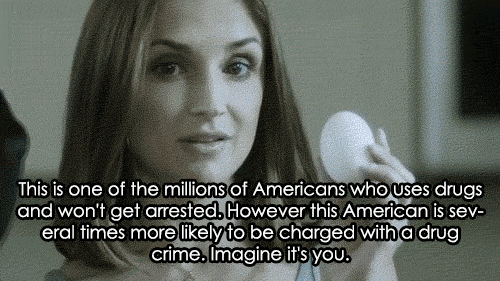
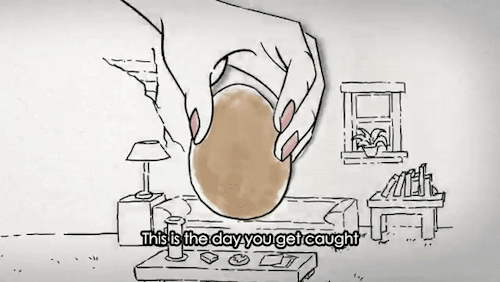
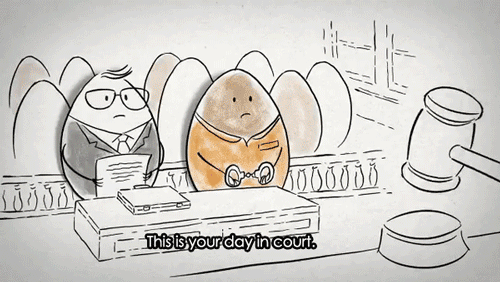
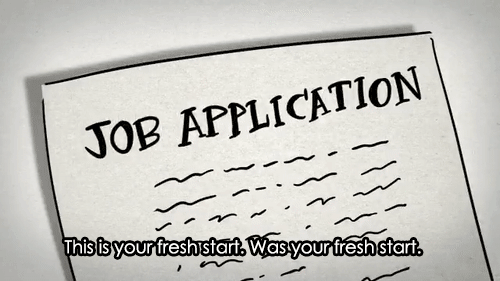
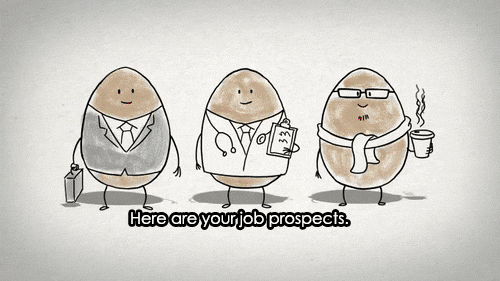
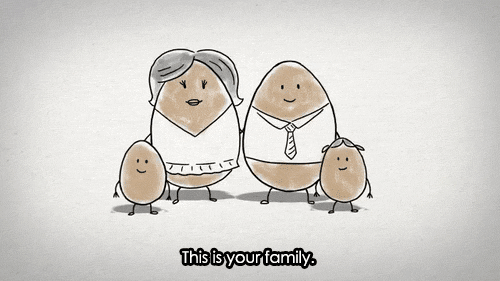
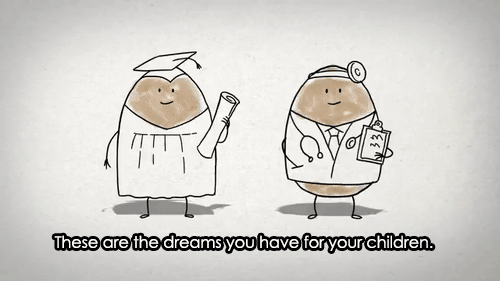
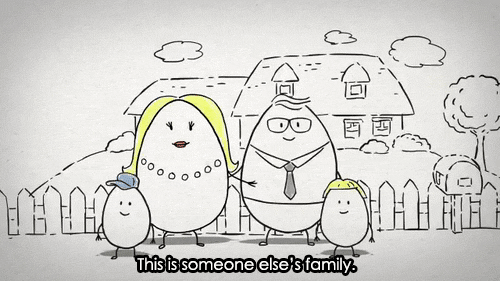
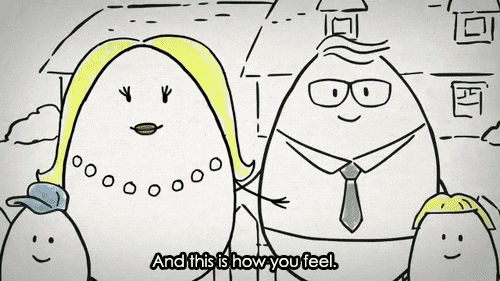


The war on drugs is rooted in racist policies . The failure of the war and drugs is obvious. We need to find a better solution, because people of color should never be the victims of racist policies. White Americans are more likely than black Americans to have used most kinds of illegal drugs, including cocaine and LSD. Yet blacks are far more likely to go to prison for marijuana, which is not a hard drug. Moreover , even when white people get caught , they get less time in prison.
honey production does hurt the bees. the honey stolen is replaced with a toxic synthetic sugar substance which isn't healthy for them. honey isn't for humans to steal, please educate yourself.
Arright, sit down, you’re about to get some knowledge dropped on you by somebody with beekeepers and meadmakers in the family.
The “toxic synthetic sugar substance” you’re referring to? Is sugar water. Literally SUGAR and WATER. There’s nothing synthetic about it. And the bees only rarely need a LITTLE bit of sugar water to help them get through, because if they’re provided with enough nectar, bees will make a shit-ton of honey. Most hives generate more honey than they can ever use.
And when a hive starts getting too full, the bees may swarm and try to go find a new place to live. Do you know what happens to a more than three-quarters of swarms that leave their hive? THEY DIE. Yup. Either they can’t find a new hive, or they run into predators, or they wind up landing somewhere that humans don’t want them and then exterminators get called.
So removing a few frames from the hive, taking out the wax and the honey, and replacing them for the bees to fill with new comb and honey and larvae is actually GOOD for the hive. The bees stay busy, they’ve got frames to fill, the queen doesn’t feel the need to go anywhere, and their human buddies can help keep them safe from natural predators and pesticides.
The mutually-beneficial relationship between humans and bees has existed for literally thousands of years. People keep hives, bees pollinate crops and make honey, people harvest the honey, the bees get extra protection and can happily buzz away keeping the plants healthy and making more sweet sugary goo.
Honeybees are an endangered species. If they die, not only does your vegan diet become completely impossible, but the entire planet is royally fucked.
And do you know who’s doing more than anybody else to keep them alive and make sure we don’t all starve?
BEEKEEPERS. And they treat those bees like their own damn children. They’re not going to feed them toxins or “steal” all their food, they want the bees to be happy and healthy and THRIVING.
Being vegan is absolutely fine, but don’t go trying to tell other people how to eat and don’t sound off on shit until YOU educate YOURSELF. Try talking to an actual beekeeper sometime. Or at the very least, read an article by a beekeeper instead of relying on someone else’s scare tactics.
Are you a “can’t write dialogue” writer or a “can’t describe anything” writer
Writing from Scratch #9
Complex Plots, Part 2: Modifying Plots
The second way we’ll try complicating a plot is through plot modifiers. This happens when a try-fail cycle not only furthers the solution of one plot-problem but spawns a new plot-problem. What these plots actually modify are the stakes. They can give far-off worst-case scenarios more immediacy, which is what the plot analysis we’ll be getting into today does. Or they can show clear examples of what’s at stake for more abstract cases (think of Gollum in The Lord of the Rings clarifies our fears for what could happen to Frodo).
How does this work? Let’s look back at the plot analysis I did for The Expanse, Season 1 Episode 2, “The Big Empty.” A brief recap:
The Background: The Knight, a small, rickety life-boat sized spaceship with 5 survivors is all that’s left of the Canterbury after an attack on the larger vessel.
The Problem: The Knight’s radio is dead.
Read more on WordPress










TBC since tumblr’s posting methods changed
Writing from Scratch #3
Flash Fiction: A Simple Plot
The first writing prompts we’re going to tackle will be flash fiction pieces. Flash fiction is a complete story written in under 1,500 words. We’ll be aiming for 250-500 words at first – that is one or two pages double spaced written in Times New Roman 12 pt. font.
The type of flash fiction I’ll encourage you to write will be Eighteen Sentence Stories*, and each of these sentences will have a very specific job.
The first Three sentences will provide the main character, the setting, and the genre (which clues the audience in on what kind of story they are about to read).
The main character should be introduced via an action that reveals their attitude at the start and with one defining job or trait that relates them to the plot. For example, a character may be both a father of three and a pilot. If the problem of the plot will deal with the kidnapping of one of his daughters, then “father” or “father of three” will be the defining job; if the problem of the plot will deal with the starship he’s piloting falling under attack, then “pilot” will be the defining job.
The setting should be introduced via a grounding sensory detail. The lingering scent of cookies left to burn when the parents received the ransom note. Or the pressure of being pinned back into the pilot’s seat under g forces.
The genre should be introduced via something specific and unique to the story. A ransom note is not specific or unique; a ransom note scrawled on the back of a picture that went missing off the fridge the week before is. A space ship is not specific or unique; a living space ship with a giant brain in its core that the pilot must psychically link to via the tentacles that suction onto his temples is.
Read More on WordPress
Writing from Scratch #5
The Inquiry Plot
The problem of an inquiry plot involves a question that needs answering for its solution. The classic is Whodunnit? But any who, what, where, when, why, or how style questions can provide the problem for an inquiry plot. Traditionally, try-fail cycles in an inquiry plot come in the form of following clues which can lead to more clues (or questions) or end up being red-herrings that have caused a set back in solving the riddle.
Let’s look at the classic mystery “A Night of Fright is No Delight,” Scooby Doo! Where Are You? Season 1, episode 16. (I went a little overboard on this one, but it’s just too fun!)
If you haven’t seen this classic episode, then a quick background is that the gang has been invited to spend the night in an allegedly haunted house for the chance to receive a part of an inheritance along with four other possible heirs.
The Question: Who is the Phantom Shadow?
Read More on WordPress
Structuring a Series: Part III
Structuring a Series Part III: Planning a Series from 1 Book
Welcome back to Part III of Structuring a Series! If you haven’t read Parts I and II yet, you might want to. Or at least familiarize yourself with Dan Wells’s 7 Point Plot Structure. (No word on which one is a bigger time commitment.) Ok, so… you want to write a trilogy (or some other type of close-ended series with at least one arc running through the whole thing), BUT you only know what you…
View On WordPress
Writing from Scratch # 11: Compound Plots, Part 1
Compound Plots, Part 1: Episodes
Like complex plots, compound plots have two or more plots put together, but unlike complex plots, in compound plots, the plots can be split apart and still work as a Complete Thought.
The first way to compound plots that we’ll go over is via episodes. So, we first we need to straighten out some terminology. There is a current trend in storytelling that could be called anti-episodic (there are pockets where this is not as much the case, like crime and mystery books and television); instead what’s really popular is “serialized” storytelling. What people generally mean when they talk about episodic versus serialized storytelling is that an episodic style has a different unconnected, self-contained plot every episode or book and that a serialized style has every episode or book contributing to one very large season or series spanning plot. As with most any binary, what we’re actually looking at is a spectrum – Harry Potter has a self-contained plot with every novel, but overall, every novel contributes to the plot of Voldemort’s resurrection and final death.
Supernatural is a really interesting case study because it lasted so long and it started before the anti-episodic trend took hold. So, you can see the early seasons, especially the first season, very firmly on the episodic side of the spectrum with its monster of the week format and it slowly became more and more serialized to the point where an unrelated monster of the week was anomalous and generally warranted some kind of in episode commentary by a character.
When I talk about episodic compound plots, I’m kind of talking about this idea, but it’s squares and rectangles. Or maybe squares and quadrilaterals. What I’m talking about is that one plot-problem will be solved, and then another plot-problem will arise. What the episodic-serialized debate is talking about is the causal relationship between those plot-problems. There are some serialized series that do not have episodic compound plots, but most of them do.
Continue Reading on WordPress
Mr. Gaiman, I love your writing and your tumblr presence. If I can ask your advice, I’m a writer and I feel like I’ve lost inspiration for plot. I want to write emotions and relationships, but the story always escapes me. What do you do when you know your characters and how they relate to each other but not the story? Thank you!
The quickest way, if you have two characters you like and want to see succeed, is to have them want mutually exclusive things. And that’s a plot.
-
 wesawbears liked this · 1 week ago
wesawbears liked this · 1 week ago -
 fluffanonn liked this · 1 week ago
fluffanonn liked this · 1 week ago -
 jeanmoreauslefttit liked this · 1 week ago
jeanmoreauslefttit liked this · 1 week ago -
 writingbyjillian reblogged this · 1 week ago
writingbyjillian reblogged this · 1 week ago -
 jilliancatherine liked this · 1 week ago
jilliancatherine liked this · 1 week ago -
 kotlcimscreaming reblogged this · 1 week ago
kotlcimscreaming reblogged this · 1 week ago -
 sillyfangirl42 reblogged this · 3 weeks ago
sillyfangirl42 reblogged this · 3 weeks ago -
 fb-blong liked this · 4 weeks ago
fb-blong liked this · 4 weeks ago -
 takemetothe-river reblogged this · 4 weeks ago
takemetothe-river reblogged this · 4 weeks ago -
 takemetothe-river liked this · 4 weeks ago
takemetothe-river liked this · 4 weeks ago -
 jaykyle reblogged this · 4 weeks ago
jaykyle reblogged this · 4 weeks ago -
 wonderwhrf liked this · 1 month ago
wonderwhrf liked this · 1 month ago -
 cowboycanines liked this · 1 month ago
cowboycanines liked this · 1 month ago -
 kohitsuji reblogged this · 1 month ago
kohitsuji reblogged this · 1 month ago -
 thewhitewingeddark reblogged this · 1 month ago
thewhitewingeddark reblogged this · 1 month ago -
 melosias liked this · 2 months ago
melosias liked this · 2 months ago -
 teashirt505 liked this · 2 months ago
teashirt505 liked this · 2 months ago -
 wynters-writings liked this · 2 months ago
wynters-writings liked this · 2 months ago -
 heckcareoxytwit liked this · 3 months ago
heckcareoxytwit liked this · 3 months ago -
 huntserein reblogged this · 3 months ago
huntserein reblogged this · 3 months ago -
 huntserein liked this · 3 months ago
huntserein liked this · 3 months ago -
 gh0stfacemasc liked this · 3 months ago
gh0stfacemasc liked this · 3 months ago -
 ram018 liked this · 3 months ago
ram018 liked this · 3 months ago -
 kohitsuji liked this · 3 months ago
kohitsuji liked this · 3 months ago -
 et3rnalsakura liked this · 3 months ago
et3rnalsakura liked this · 3 months ago -
 a-storm-of-nightengales liked this · 3 months ago
a-storm-of-nightengales liked this · 3 months ago -
 kingcavall liked this · 3 months ago
kingcavall liked this · 3 months ago -
 rangerpippin liked this · 4 months ago
rangerpippin liked this · 4 months ago -
 humanbeanisnotamused liked this · 4 months ago
humanbeanisnotamused liked this · 4 months ago -
 pareidoliajules reblogged this · 4 months ago
pareidoliajules reblogged this · 4 months ago -
 screwzara liked this · 4 months ago
screwzara liked this · 4 months ago -
 thechattycrow liked this · 4 months ago
thechattycrow liked this · 4 months ago -
 authoralexharvey reblogged this · 4 months ago
authoralexharvey reblogged this · 4 months ago -
 cephalosaurs-reblog reblogged this · 4 months ago
cephalosaurs-reblog reblogged this · 4 months ago -
 discoedelysium liked this · 4 months ago
discoedelysium liked this · 4 months ago -
 tmblrissstupid liked this · 4 months ago
tmblrissstupid liked this · 4 months ago -
 aceofneptune liked this · 4 months ago
aceofneptune liked this · 4 months ago -
 transparententhusiastmentality liked this · 4 months ago
transparententhusiastmentality liked this · 4 months ago -
 yet-another-sideblog reblogged this · 4 months ago
yet-another-sideblog reblogged this · 4 months ago -
 cynicaljoystick liked this · 5 months ago
cynicaljoystick liked this · 5 months ago -
 obsidian-goblet liked this · 5 months ago
obsidian-goblet liked this · 5 months ago -
 wingedcatastrophe reblogged this · 5 months ago
wingedcatastrophe reblogged this · 5 months ago -
 felttheburden liked this · 5 months ago
felttheburden liked this · 5 months ago -
 frenchrelovution reblogged this · 6 months ago
frenchrelovution reblogged this · 6 months ago -
 pennybeagle liked this · 6 months ago
pennybeagle liked this · 6 months ago -
 decemberthenemesis liked this · 7 months ago
decemberthenemesis liked this · 7 months ago
check out my main blog www.theferalcollection.wordpress.com and find fandoms and funstuff on www.theferalcollection.tumblr.com
103 posts